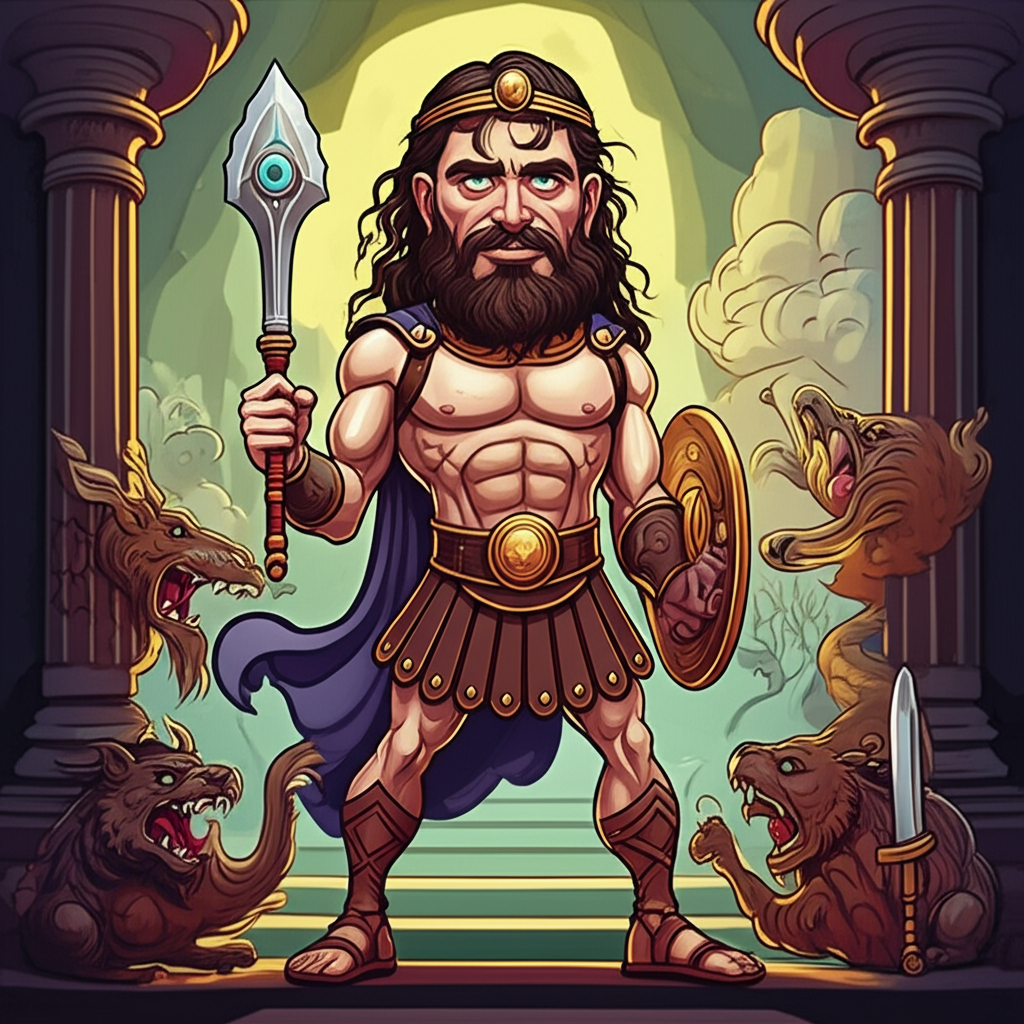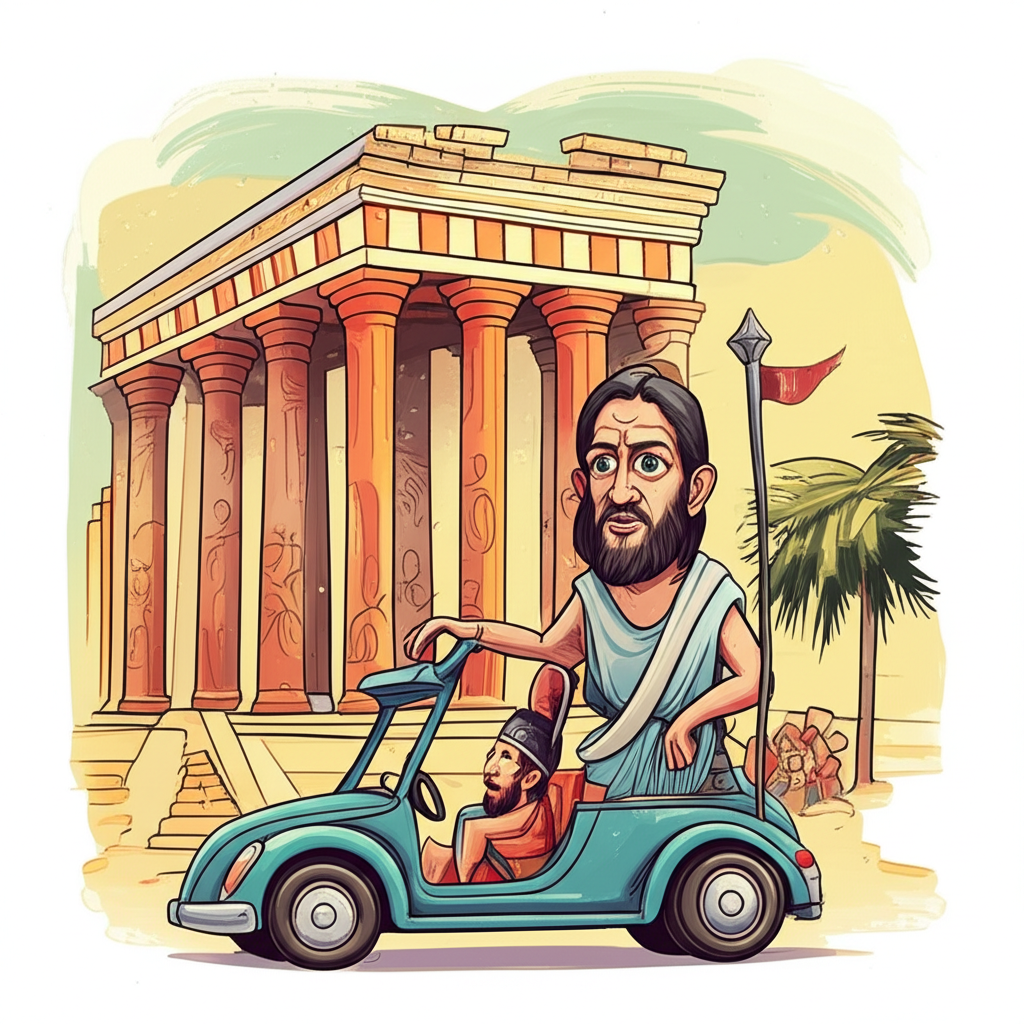
The echoes of ancient Greece, a civilization steeped in rich mythology, continue to resonate through the ages, offering us glimpses into the beliefs, fears, and aspirations of its people. Among the most enduring figures of this pantheon is Heracles, son of Zeus and a mortal woman, renowned for his superhuman strength and his legendary Twelve Labors. While many of these trials involved confronting monstrous beasts and overcoming impossible physical feats, one of the most profound and perilous quests Heracles is said to have undertaken was a descent into the realm of Hades, the kingdom of the dead. This narrative, passed down through generations of storytellers, offers a fascinating lens through which to understand how the ancient Greeks grappled with mortality, the afterlife, and the very limits of human (or in Heracles’ case, demigod) endurance.
The myth of Heracles and his journey into the Underworld emerges from a cultural landscape where the divine and the mortal were intricately interwoven. Ancient Greece, a collection of independent city-states with diverse customs and beliefs, flourished during a period where oral tradition played a vital role in shaping understanding. The world was often perceived as a dynamic place, governed by powerful, anthropomorphic gods who intervened in human affairs, rewarding virtue and punishing hubris. The concept of the afterlife, while not always clearly defined or universally comforting, was a persistent theme. The Underworld, a shadowy, subterranean realm ruled by the grim god Hades, represented the ultimate destination for most souls, a place of eternal twilight and muted existence, far removed from the vibrant life of the mortal world. It was a realm to be feared, a stark contrast to the sun-drenched plains and bustling agoras of the living.
Within this mythical framework, Heracles stands as a figure of extraordinary power and divine heritage. He is not merely a strong man; he is a demigod, blessed and burdened by his celestial father. His immense strength, often depicted as capable of wrestling lions and holding up the sky, is a tangible manifestation of his divine lineage. However, it is his mortal mother, Alcmene, who grounds him in the human experience, and it is through his trials that his human resilience and determination are tested. The symbolic attributes of Heracles are his strength, his courage, and his perseverance. He is often depicted with a lion skin draped over his shoulders, a testament to his first labor, and a massive club, the instrument of his many victories. These symbols represent not just physical prowess, but also the ability to overcome overwhelming odds, to face the darkest of fears and emerge, if not unscathed, then at least victorious.
The story of Heracles’ descent into the Underworld typically occurs as the final, and arguably most daunting, of his Twelve Labors, imposed by the tyrannical King Eurystheus. The task given was to capture Cerberus, the monstrous three-headed dog that guarded the gates of Hades, preventing any living soul from entering and any dead soul from leaving. This was not a labor of brute force alone; it was a journey into the very heart of oblivion, a confrontation with death itself.
The narrative begins with Heracles seeking permission from Hades and Persephone, the rulers of the Underworld. Some versions suggest he was tasked by Eurystheus, while others imply Heracles undertook this journey willingly, perhaps to retrieve a soul or to prove his mettle against the ultimate adversary: death. Upon his arrival at the Styx, the river that formed the boundary between the living and the dead, Heracles encountered Charon, the ferryman. Charon, a wizened and spectral figure, was notorious for his reluctance to ferry the living. However, Heracles, with his imposing presence and perhaps a well-placed threat or a bribe, managed to convince the ferryman to carry him across.
The Underworld itself was a landscape of perpetual gloom. Whispers of the departed, the rustling of spectral forms, and the mournful cries of those who lamented their lost lives filled the air. Heracles, armed with his strength and his unwavering resolve, pressed onward towards the imposing gates guarded by Cerberus. The beast was a terrifying spectacle: three snarling heads, each with its own venomous gaze, and a serpentine tail that lashed with deadly intent. Its growls echoed through the desolate plains, a symphony of dread.
Instead of immediately resorting to violence, a hallmark of Heracles’ approach in many other labors, this encounter often sees him attempting a more diplomatic, or at least a less lethal, method. He approached Cerberus without weapons, relying on his divine strength and his inherent aura of power. He grappled with the monstrous canine, his muscles straining against the beast’s immense power. The struggle was titanic, a clash of primal forces in the heart of the Underworld. Heracles, with his superior strength and the favor of the gods, eventually managed to subdue Cerberus, locking it in a powerful embrace until the beast, overwhelmed, surrendered. He then dragged the three-headed hound, still writhing and snapping, back towards the surface, a testament to his triumph over the very embodiment of death’s dominion.
The symbolism inherent in the myth of Heracles and the Underworld is multifaceted. For the ancient Greeks, the Underworld represented the inescapable reality of death. Heracles’ ability to enter, confront its guardian, and return alive was a potent symbol of overcoming the ultimate fear. It spoke to the human desire to defy mortality, to find a way to transcend the limitations of their earthly existence, even if only in a mythic narrative. The act of bringing Cerberus to the surface could also be interpreted as a symbolic victory over the darkness and despair that the concept of death might evoke, bringing a semblance of order or control to the unknown. Furthermore, the journey tested not just Heracles’ physical strength, but also his courage and his ability to navigate the psychological landscape of fear and despair. It highlighted the resilience of the spirit in the face of overwhelming adversity.
In modern interpretations, the myth of Heracles’ descent into the Underworld continues to capture the imagination. It has been retold and reinterpreted in countless forms across literature, film, and video games. These modern narratives often focus on the psychological aspects of the journey, exploring themes of confronting personal demons, facing one’s own mortality, and the arduous path to redemption or self-discovery. The image of Heracles wrestling with Cerberus remains a powerful visual metaphor for battling inner turmoil and external threats. In academic and cultural studies, the myth serves as a valuable artifact, offering insights into ancient Greek cosmology, religious beliefs, and their understanding of human nature.
In conclusion, the narrative of Heracles and his quest into the Underworld is a profound and enduring story originating from the rich tapestry of ancient Greek mythology. It is a testament to the power of storytelling, passed down through oral traditions and later preserved in written works, offering a window into the cultural milieu of its creators. As Muslims, we recognize that only Allah, the Almighty, is the true Creator and Sustainer of all existence, and that divine power and sovereignty belong to Him alone. These ancient tales, while captivating and culturally significant, are products of human imagination and the historical context in which they were conceived. The enduring appeal of myths like Heracles’ descent lies not in their literal truth, but in their ability to explore universal human themes – courage, fear, mortality, and the indomitable spirit – and to enrich our understanding of cultural heritage and the enduring power of narrative tradition.





